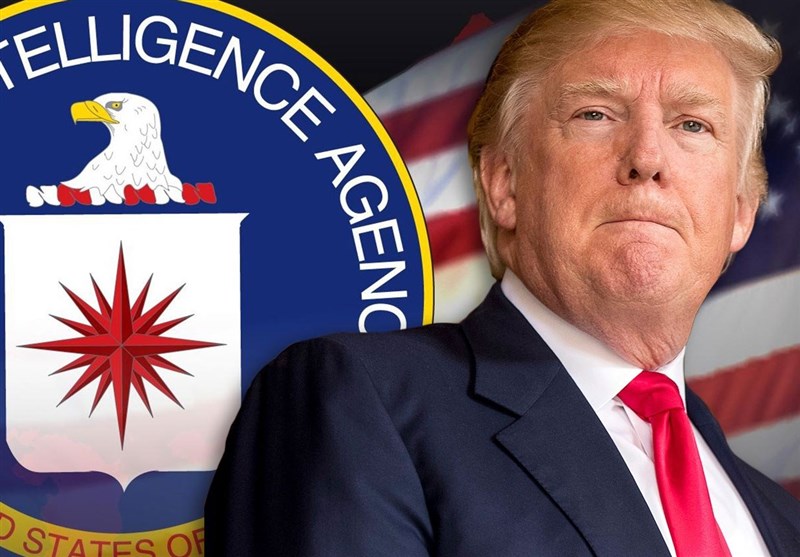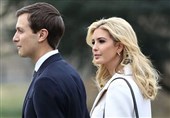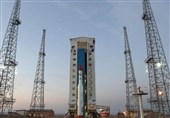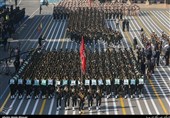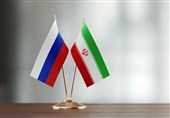US Allies Sign Sweeping Trade Deal in Challenge to Trump: Report
TEHRAN (Tasnim) - A trade pact originally conceived by the United States to counter China’s growing economic might in Asia now has a new target: President Trump’s embrace of protectionism.
A group of 11 nations — including major United States allies like Japan, Canada and Australia — signed a broad trade deal on Thursday in Chile’s capital, Santiago, that challenges Mr. Trump’s view of trade as a zero-sum game filled with winners and losers.
Covering 500 million people on either side of the Pacific Ocean, the pact represents a new vision for global trade as the United States imposes steel and aluminum tariffs on even some of its closest friends.
Mr. Trump withdrew the United States from an earlier version of the agreement, then known as the Trans-Pacific Partnership, a year ago as one of his first acts in office. The resuscitated deal is undeniably weaker without the participation of the world’s biggest economy, but it serves as a powerful sign of how countries that have previously counted on American leadership are now forging ahead without it, The New York Times reported.
“Globally, there has been an increasing level of uncertainty, given the adoption of policies and measures by some key players that question the principles that have contributed to generating prosperity for our peoples,” President Michelle Bachelet of Chile said in a speech shortly before the pact was signed. “We need to stay on the course of globalization, yet learning from our past mistakes.”
In its original incarnation as the TPP, the accord was conceived as a counterweight to China, whose vast economy was drawing other Asian countries closer despite its state-driven model and steep trade barriers. Not only does the pact lower trade barriers, it could also prod Beijing to make changes to enjoy the same benefits.
When President Obama was advocating the deal, he said that “America should call the shots” instead of China.
Now, signatories are opening the door for China to join. Heraldo Muñoz, Chile’s foreign minister, told reporters on Thursday afternoon that Chinese officials had been weighing the possibility of signing on.
“This will be open to anyone who accepts its components,” Mr. Muñoz said. “It’s not an agreement against anyone. It’s in favor of open trade.”
On Thursday, Mr. Trump went in the opposite direction, announcing tariffs on steel and aluminum imports to the United States. He said that Canada and Mexico were being exempted for now, and that allies like Australia could later be excluded. His order could affect Brazil, China, Germany, Japan, South Korea and Turkey, though he said he would have leeway to add or take countries off the list as he sees fit.
The United States has “gone from being a leader to actually being the No. 1 antagonist and No. 1 source of fear” on trade, said Jeffrey Wilson, the head of research at Perth U.S.-Asia Center at the University of Western Australia. “If you’re a trade policy maker in Asia, your No. 1 fear is that Trump is going to take a swing at you.”
He added that such fears could prompt countries, however reluctantly, to tether themselves more closely to China. “The U.S. is really delivering the region to China at the moment,” Mr. Wilson said.
The new agreement — known as the Comprehensive and Progressive Agreement for Trans-Pacific Partnership — drops tariffs drastically and establishes sweeping new trade rules in markets that represent about a seventh of the world’s economy. It opens more markets to free trade in agricultural products and digital services around the region. While American beef faces 38.5 percent tariffs in Japan, for example, beef from Australia, New Zealand and Canada will not.
Once it goes into effect, the agreement is expected to generate an additional $147 billion in global income, according to an analysis by the Peterson Institute for International Economics. Its backers say it also bolsters protections for intellectual property and includes language that could prod members to improve labor conditions.
Other members include Mexico, Vietnam, New Zealand, Chile, Malaysia, Peru, Singapore and Brunei. The deal will go into effect as soon as the legislative bodies of at least three signers ratify it. How long that will take is unclear.
China, which has discussed forming its own regional trade pact, has been more positive about the new deal since the United States pulled out. It sent a high-level delegation a year ago to Viña del Mar, Chile, where the pact’s members sought to regroup after the United States’ withdrawal. Experts said China could feel the pull if still more countries joined. The pact is also built around fostering trade in sophisticated manufactured goods and high-tech products, and China now produces many of those in abundance.
“It’s hard to ignore rules that everyone else is agreeing to, and they will probably look carefully at these rules,” said Wendy Cutler, a former United States trade negotiator who worked on the Trans-Pacific Partnership and is now managing director of the Washington office of the Asia Society Policy Institute.
Wang Yi, China’s foreign minister, said on Thursday that the government hoped free-trade agreements in the region would play “a constructive role in their respective fields in resisting trade protectionism and building an open world economy.”
The new version of the TPP does not pack the same punch as the earlier iteration. With the United States, the agreement would have represented 40 percent of the world’s economy, giving its provisions added heft.
Still, the deal could appeal to companies trying to navigate the shifting trade waters.
“In a world that is so upside-down, especially for companies, companies will need to seek out growth and stability wherever they can,” said Deborah Elms, founder and executive director of the Asian Trade Center, a consulting firm in Singapore. “And that stability does not appear to be coming from the United States, where policy seems to shift at a moment’s notice.”
Japan, which has the largest economy among the remaining trade partners and played a leadership role in keeping the coalition of 11 countries together, is still holding out hopes that the United States might return to the pact, under either Mr. Trump or a subsequent administration.
“We think the U.S. should come back, and we’ll say, ‘Please do come back,’ ” said Ichiro Fujisaki, a former Japanese ambassador to Washington. “It may sound a little impertinent, but the U.S. has taken many different positions on the economy or security.”
The Trump administration has recently signaled that it is open to re-entering the Trans-Pacific Partnership. In an interview at the World Economic Forum earlier this year, Mr. Trump said, “If we did a substantially better deal, I would be open to TPP.”
Steven Mnuchin, the United States Treasury secretary, said he had held discussions about the prospect of rekindling American membership in the pact, though at a congressional hearing in February, he said it was not a priority.
Yorizumi Watanabe, a professor of policy management at Keio University in Tokyo, said, “If the U.S. is retreating from this region, either as the pace setter or agenda setter of economic affairs or security affairs, this will be quite detrimental to the stability of this region.”
He added: “TPP as such should not be seen as a mere free-trade or economic agreement. This should be seen from a kind of geopolitical point of view.”
Heft could come from others. The Peterson Institute for International Economics in Washington estimates that if five other places — Indonesia, South Korea, the Philippines, Taiwan and Thailand — joined the partnership, the annual increase to global income would total $449 billion by 2030, almost as much as it would have been if the United States were included.
In the deal signed on Thursday, only 22 of more than 600 original provisions have been suspended, relating to intellectual property protection and a grab bag of other issues, several of which had been pushed by the United States. Kazuyoshi Umemoto, Japan’s chief negotiator for the partnership, said that if the United States decided to re-enter the deal, those provisions could be reinstated.
“Trump won’t last forever,” said Patricio Navia, a political scientist at New York University. “Countries will return to a path toward globalization and this sends a beacon of hope.”
